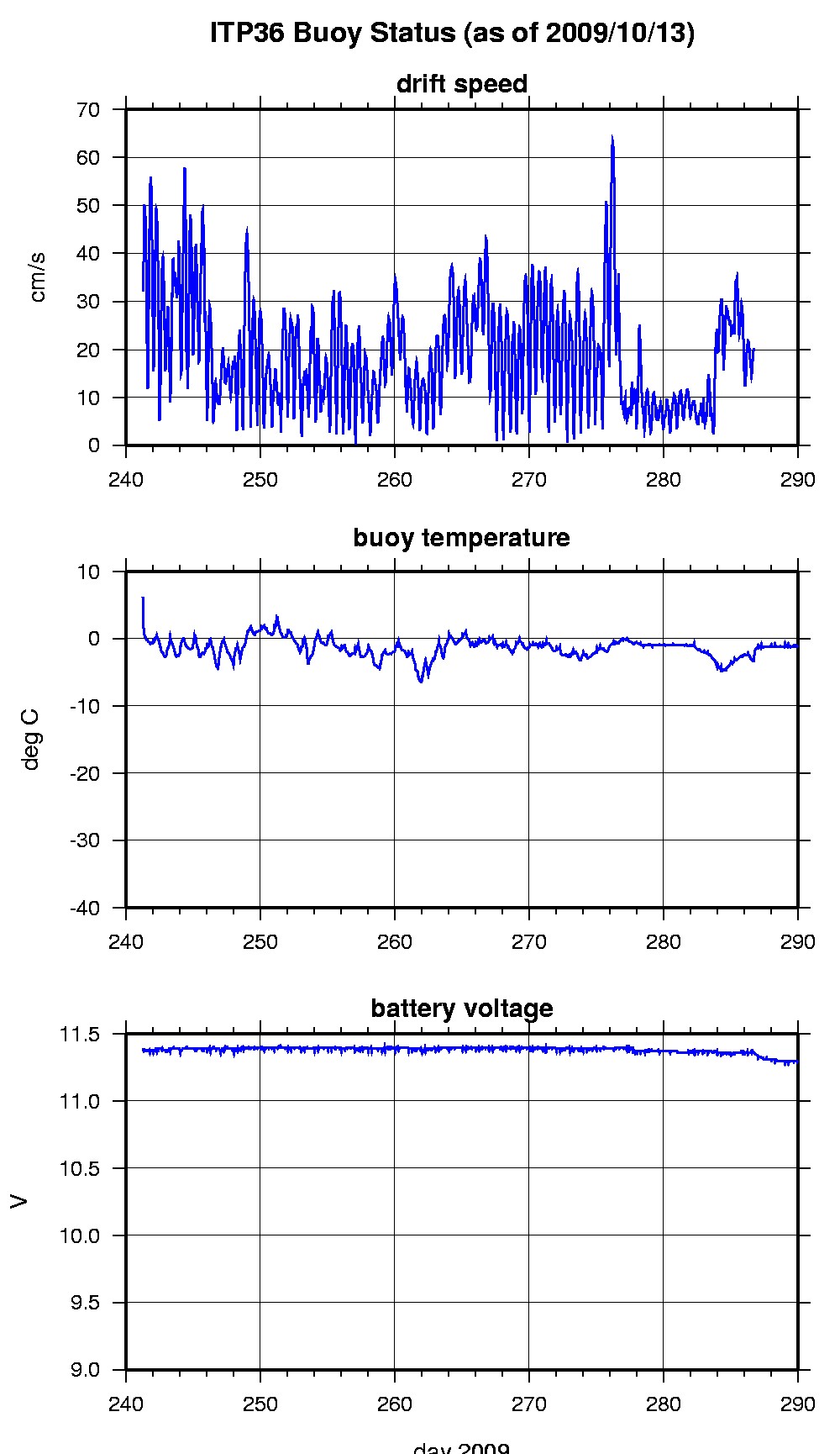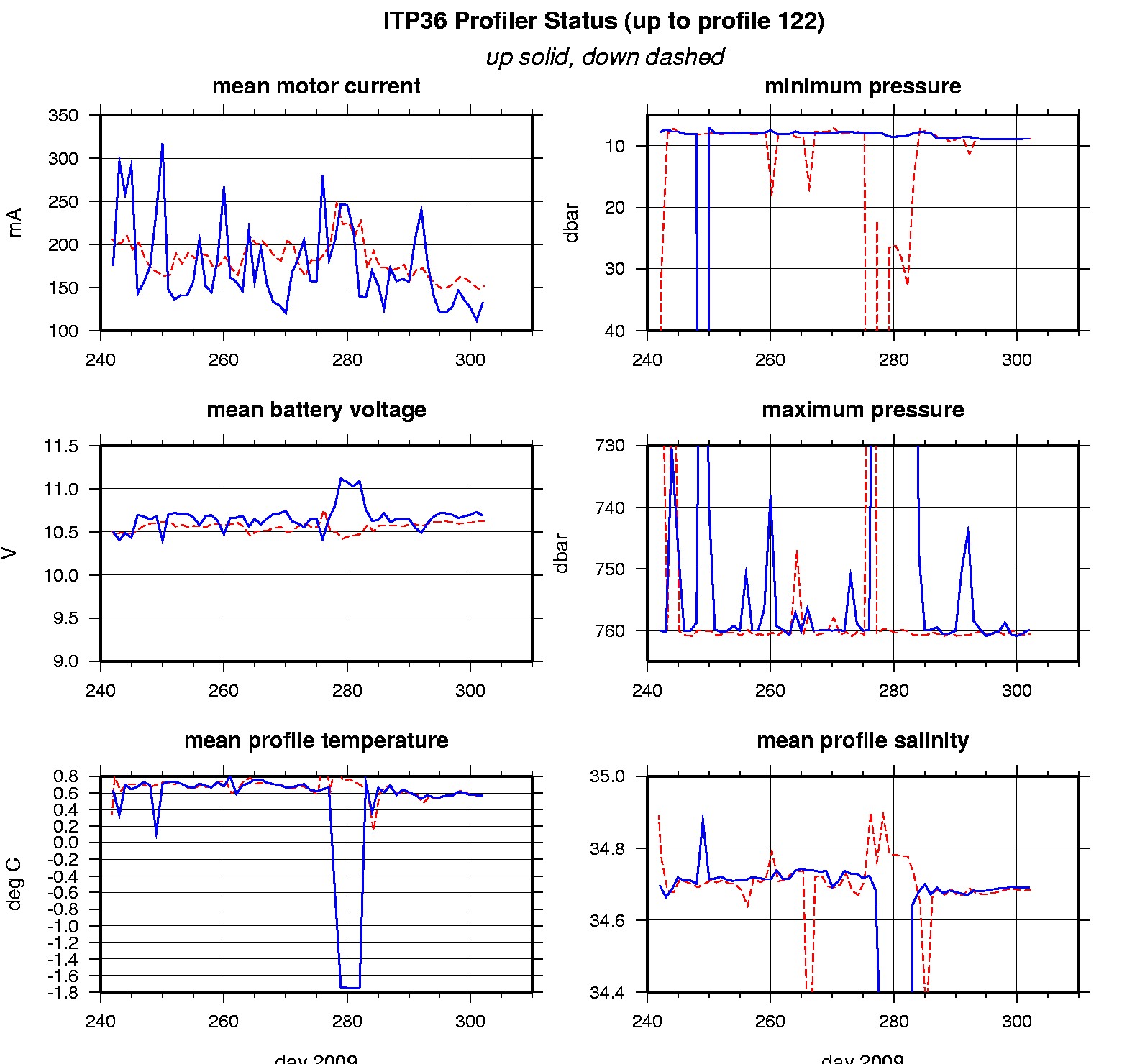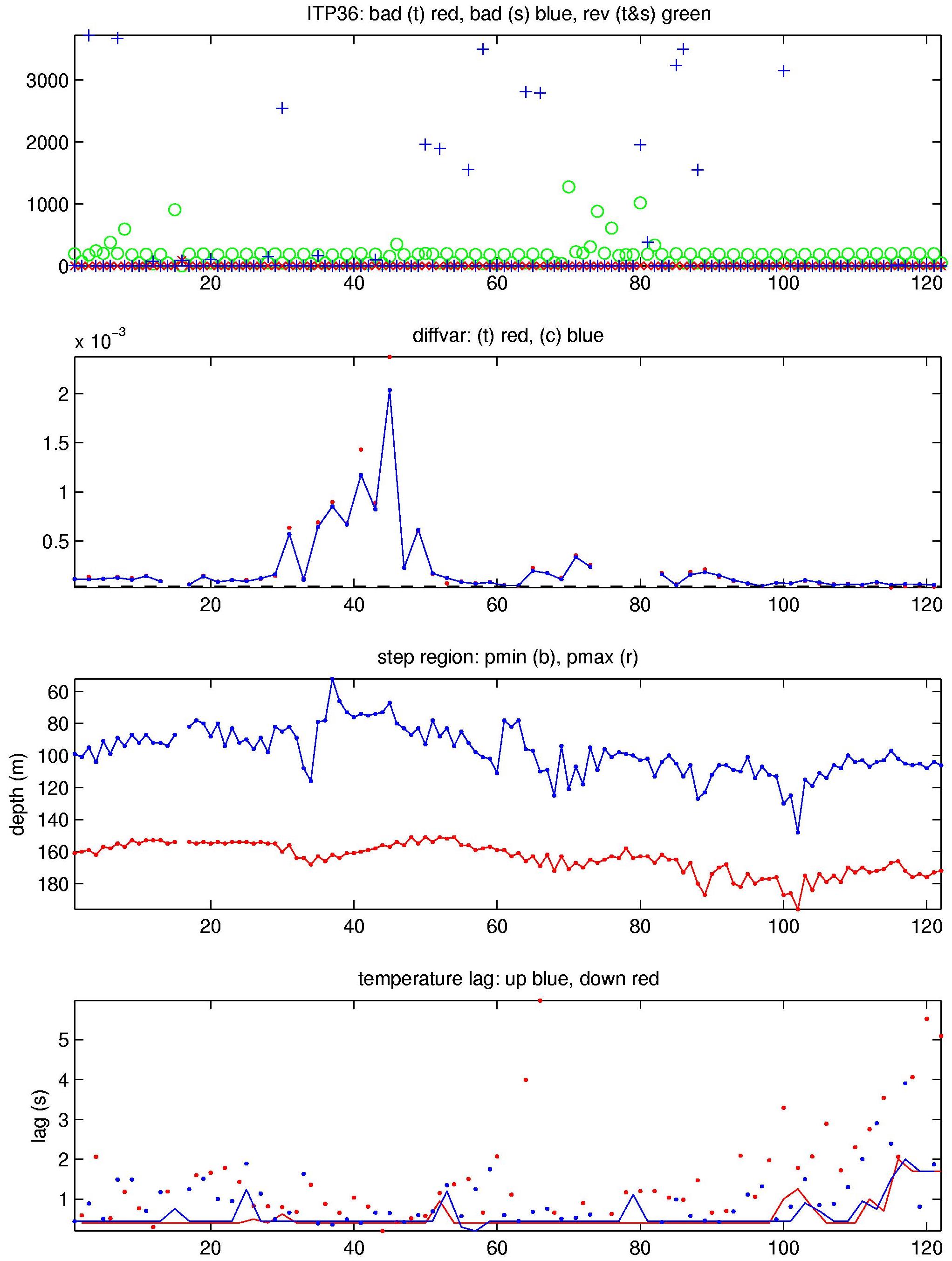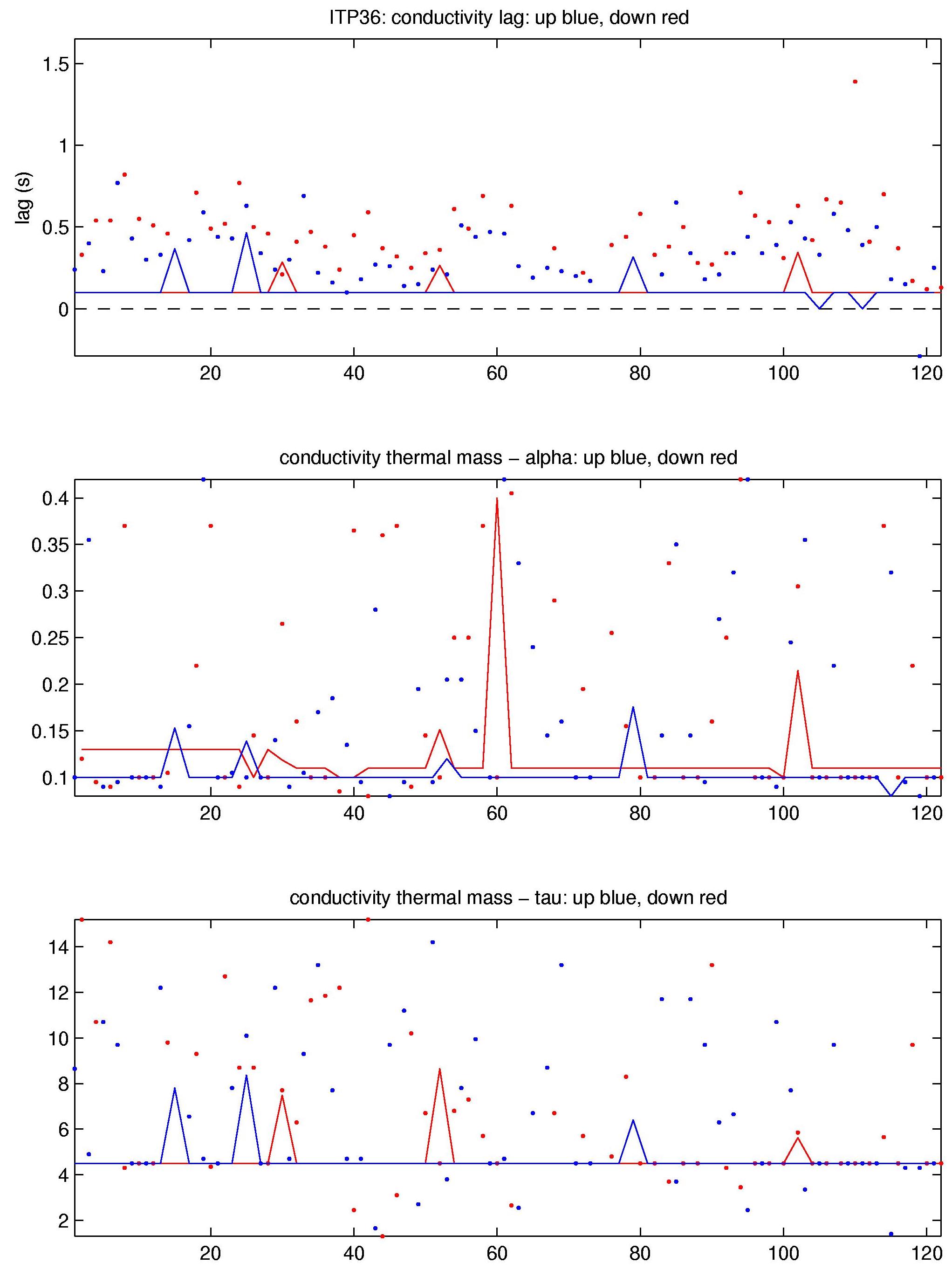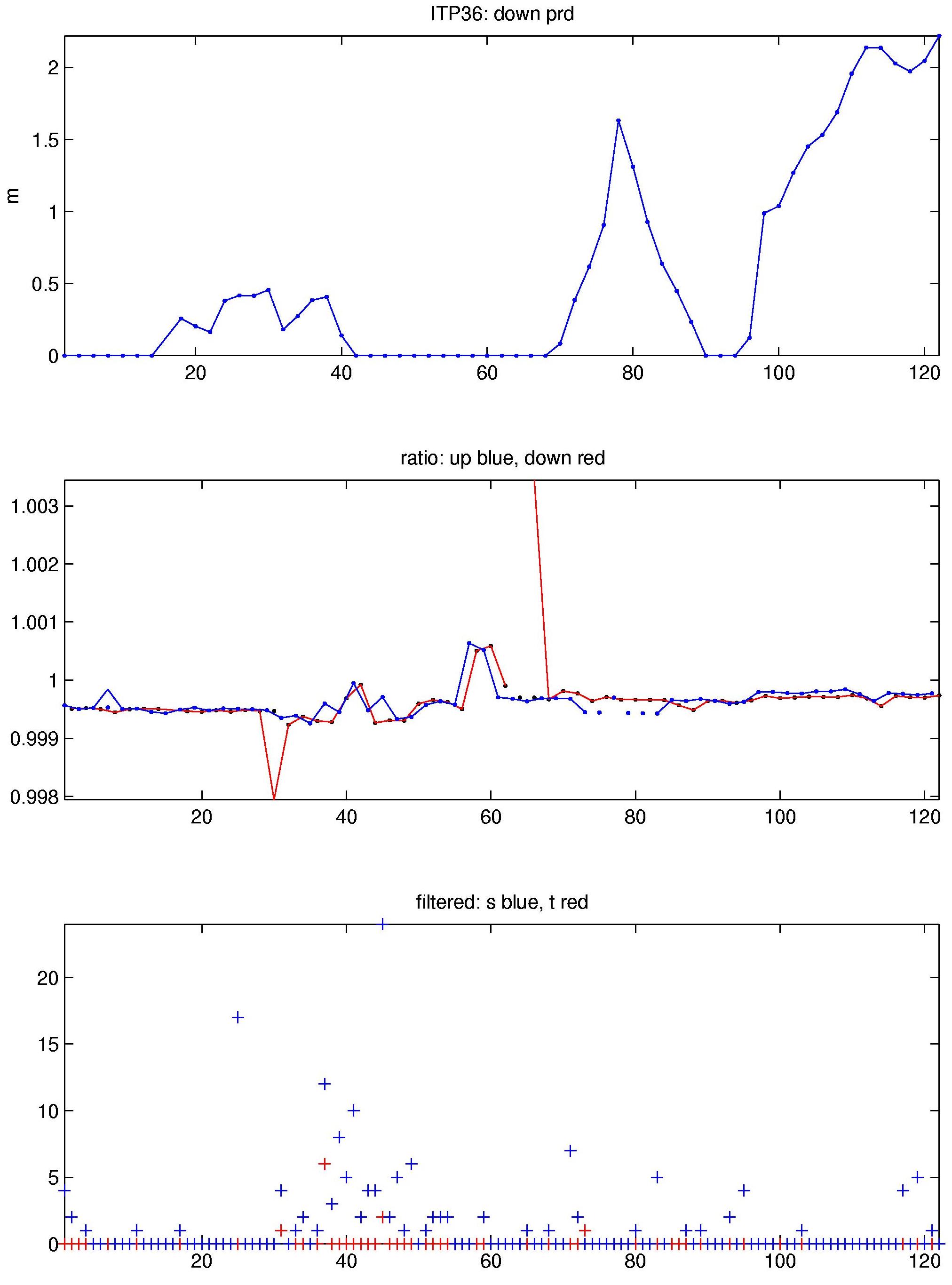ITP36 Data Processing
The 122 profiles that were obtained by ITP36 were processed according to the procedures described in the ITP Updated Data Processing Procedures. The processing parameters for this ITP are shown in the figures to the right. Thermohaline staircases were generally present, enabling CTD lag corrections. However, many of the steps were less sharp than those observed for other ITPs. The processing software tended to favor unusually large lag corrections that tried to sharpen the steps, but frequently introduced "overshoots" with vertical instabilities. Returning to more standard lag settings removed many of the instabilities.
As usual, some conductivity (salinity) data were affected by biofouling or similar glitches. However, after removing the standard spikes and contaminations, the remaining record included an unusual number of poor profiles. The largest offenders were edited out completely. In addition, a fair number of profiles appeared reasonable in a gross sense, but showed increased noise and small instabilities including in the deepest "quiet" portion. The glitches were too numerous to be cleaned up by individual editing. Curiously, they frequently responded only little to lag changes, including drastic ones. In response, profiles 31 to 63 were marked as "questionable" (qflag = 1). The conductivity adjustment ("rat") did not include unusually large spikes (i.e, massive short-term contaminations), but showed several smaller step-like changes. These frequently coincided with increased noise.
See the Data Products tab to the left for descriptions of the three levels (I, II, III) of data processing and to access all data.
